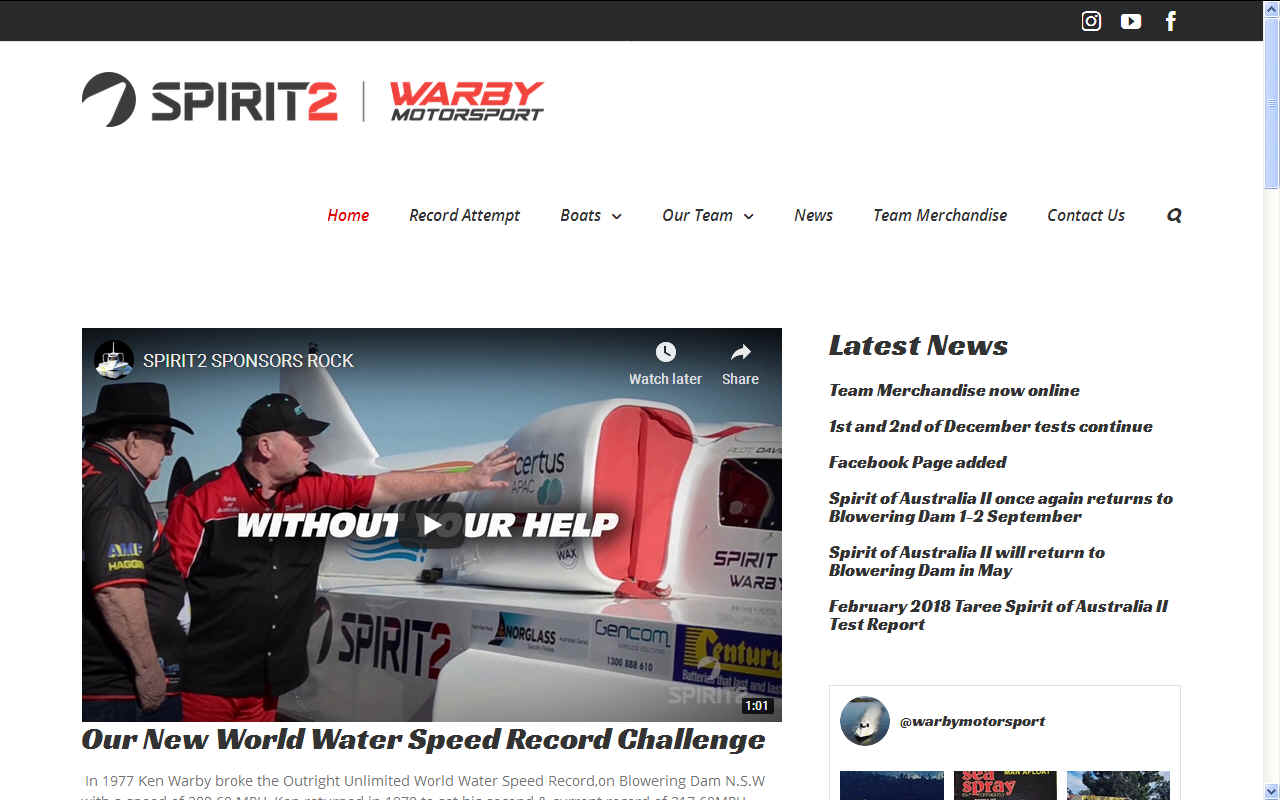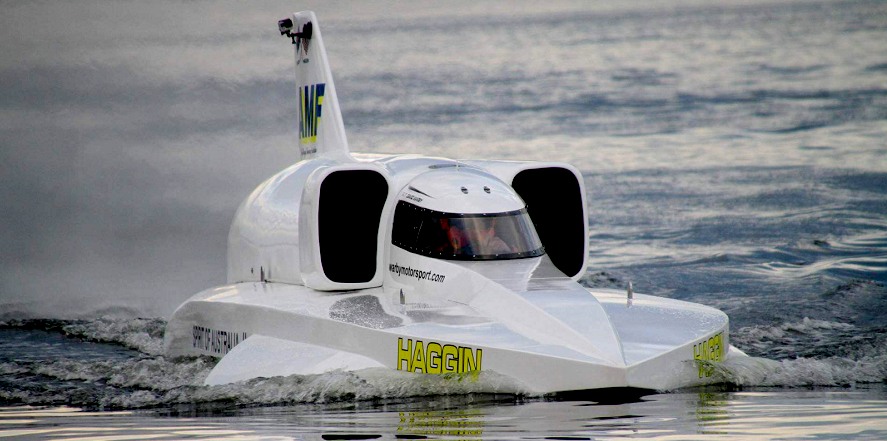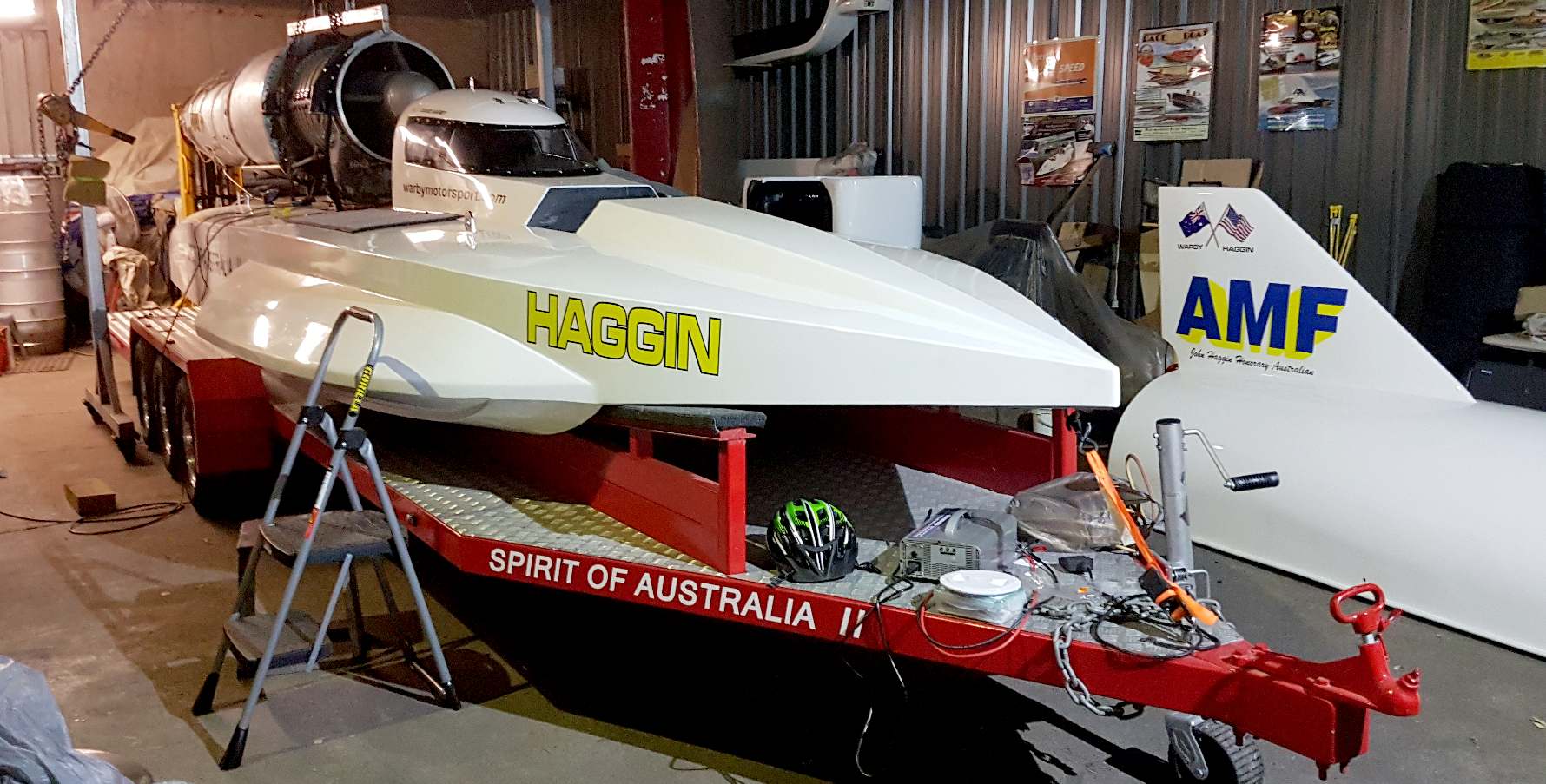|
WATER SPEED RECORD HISTORY
AUTOMOTIVE A TO Z CHARITY CONTACT EVENTS HOME SITE INDEX
|
||||||||||||||||||||||||||||||||||||||||||||||||||||||||||||||||||||||||||||||||||||||||||||||||||||||||||||||||||||||||||||||||||||||||||||||||||||||||||||||||||||||||||||||||||||||||||||||||||||||||||||||||||||||||||||||||||||||||||||||||||||||||||||||||||||||||||||||||||||||||||||||||||||||||||||||||||||||||||||||||||||||||||||
|
The information below is for water-borne vessels traveling over open water. As such, it does not include records set by vehicles traveling on or over frozen lakes.
Additionally, the records below do not distinguish between different recognized classes of the land speed record, such as top speed for a motorcycle (333.117 mph), top speed for a steam-driven vehicle (145.607 mph), or other top speeds that are not absolutes.
These are average speeds over the given distance. Two figures are given, one for the speed measured over a kilometer long course, and one for a mile long course. Early records were not set according to clearly defined rules and thus some of them are controversial.
The World Unlimited water speed record is the officially recognised fastest speed achieved by a water-borne vehicle.
* From 1909 to 1927 the record was an unofficial listing from the organisers of powerboat races.
* In 1928 the record category was officially established.
* From 1930 the rules of the record stipulated that a craft must make two runs over a timed kilometre course in opposite directions, with the record being the average speed of the two runs.
* The record is currently ratified by the UIM (Unions International Motonautique). With an approximate fatality rate of 50%, the record is one of the sporting world's most hazardous competitions. 1920s
During the 1920s powerboat racing was dominated by American businessman and racer Gar Wood, whose Miss America boats were capable of speeds approaching 100 miles per hour (160 km/h). Increased public interest generated by the speeds achieved by Wood and others led to an official speed record being ratified in 1928. The first person to try a record attempt was Gar Wood’s brother George. On 4 September 1928 he drove Miss America VII to 92.83 mph (149.40 km/h) on the Detroit River. The next year Gar Wood took the same boat up a waterway Indian Creek, Miami and reached 93.12 mph (149.86 km/h).
1930s
Like the land speed record, the water record was destined to become a scrap for national honour between Britain and the USA. American success in setting records spurred Castrol Oil chairman Lord Wakefield to sponsor a project to bring the water record to Britain. Famed land speed record breaker and racing driver Sir Henry Segrave was hired to pilot a new boat called Miss England. Although the boat wasn’t capable of beating Gar Wood’s Miss America, the British team did gain experience that they put into an improved boat. Miss England II was powered by two Rolls-Royce aircraft engines and seemed capable of beating Wood’s record.
On July 13, 1930, Segrave drove Miss England II to a new record of 98.76 mph (158.94 km/h) average speed during two runs on Lake Windermere, in Britain’s Lake District. Having set the record, Segrave set off on a third run to try to improve the record further.
Unfortunately during the run, the boat struck an object in the water and capsized, with both Segrave and his co-driver receiving fatal injuries.
Following Segrave’s death, Miss England II was salvaged from the lake and repaired. Another racing driver, Kaye Don, was chosen as the new driver for 1931. However, during this time Gar Wood recaptured the record for the US at 102.16 mph (164.41 km/h). A month later on Lake Garda, Don fought back with 110.223 mph (177.387 km/h). In February 1932, Wood responded, nudging the mark up by one mph (1.6 km/h).
In response the continued American challenge, the British team build a new boat, Miss England III. The design was an evolution of the predecessor, with a squared-off stern and twin propellers being the main improvements. Don took the new boat to Loch Lomond in Scotland, on July 18, 1932, improved the record first to 117.430 mph (188.985 km/h), and then to 119.810 mph (192.816 km/h) on a second run.
Determined to have the last word over his great rival, Gar Wood built another new Miss America. Miss America X was 12 metres long, and was powered by four supercharged Packard aeroplane engines. On September 20, 1932, Wood drove his new monster-boat to 124.860 mph (200.943 km/h). It would prove to be the end of an era. Don declined to attempt any further records, and Miss England III became a museum piece. Wood also opted to scale-down his involvement in racing and returned to running his businesses. Somewhat ironically, both of the daredevil record-breakers would live to their 90s. Wood died in 1971, and Kaye Don in 1985.
Boat design changes
Wood’s last record would be one of the final records for a conventional, single-keel boat. In June 1937, Malcolm Campbell, the world-famous land speed record breaker, drove Bluebird K3 to a new record of 126.33 mph (203.31 km/h) at Lake Maggiore. Compared to the massive Miss America X, K3 was a much more compact craft. It was 5 metres shorter and had one engine to X's four. Despite his success, Campbell was unsatisfied by the relatively small increase in speed. He commissioned a new Bluebird to be built. K4 was a ‘three pointer’ hydroplane. Unlike conventional powerboats, which have a single keel, with an indent, or ‘step’, cut from the bottom to reduce drag, a hydroplane has a concave base with two floats fitted to the front, and a third point at the rear of the hull.
When the boat increases in speed, most of the hull lifts out of the water and runs on the three contact points. The positive effect is a reduction in drag and an increase in power-to-weight ratio - the boat is lighter as it doesn’t need many engines to push it along. The downside is that the three-pointer is much less stable than the single keel boat. If the hydroplane’s angle of attack is upset at speed, the craft can somersault into the air, or nose-dive into the water.
1940s
Campbell’s new boat was a success. In 1939, on the eve of the Second World War, he took it to Coniston Water and increased his record by 11 mph (18 km/h), to 141.74 mph (228.11 km/h). The return of peace in 1945 brought with it a new form of power for the record breaker – the jet engine. Campbell immediately renovated Bluebird K4 with a De Havilland Goblin jet engine. The result was a curious-looking craft, whose shoe-like profile led to it being nicknamed ‘The Coniston Slipper’. The experiment with jet-power was not a success and Campbell retired from record-attempts. He died in 1948.
1950s
Early in the morning of June 26, 1950, a small red boat skipped across Lake Washington, near Seattle, and improved on Campbell’s record by 18 mph (29 km/h). The boat was called Sho-Mo-Shun-IV, and it was built by Seattle Chrysler dealer called Stanley Sayres. The piston-engined boat was able to run at 160 mph because it’s hull was designed to lift the top of the propellers out of water when running at high speed. This phenomenon, called ‘prop riding’, further reduced drag.
In 1952, Sayres drove Sho-Mo-Shun to 178.49 mph (287.25 km/h) - a further 18 mph (29 km/h) increase. The renewed American success persuaded Malcolm Campbell’s son Donald, who had already driven Bluebird K4 to within sight of his father’s record, to make a push for the record. However, the K4 was completely out-classed and Campbell could not run at the speeds of the Seattle-built boat. In 1951 K4 was written-off when it hit a submerged object on Coniston.
At this time, yet another land speed driver entered the fray. Englishman John Cobb, was hoping to beat 200 mph (320 km/h) in his jet-powered, all-aluminium built Crusader. A radical design, the Crusader reversed the ‘three-pointer’ design, placing the floats at the rear of the hull. On September 29, 1952, Cobb tried for a 200 mph (320 km/h) record on Loch Ness. Travelling at an estimated speed of 240 mph (386 km/h), Crusader's front plane collapsed and the craft instantly disintegrated. Cobb was rescued from the water but died of shock soon afterward.
Two years later, on October 8, 1954, another man would die trying for the record. Italian textile magnate Mario Verga, responding to a prize offer of 5 million lire from the Italian Motorboat Federation to any Italian who break the world record, built a sleek piston-engined hydroplane to claim the record. Named Laura, after Verga’s daughter, the boat was fast but unstable. Travelling across Lake Iseo at close to 190 mph (306 km/h), Verga lost control of Laura, and was thrown out into the water when the boat somersaulted. Like Cobb, he died of shock.
Meanwhile, Donald Campbell had been working on a new Bluebird - K7, a jet powered hydroplane. Learning the lessons from Cobb’s ill-starred Crusader, K7’s floats were forward of the cockpit. The craft was almost too stable: when Campbell first tried out K7, the boat’s bow wouldn’t lift out of the water. After modifications, Campbell set a new record of 202.32 mph (325.60 km/h) on Ullswater in 1955. Campbell and K7 would hold the record until June 1967, increasing it 276.33 mph (444.71 km/h) in the process.
1967
When Donald Campbell arrived at Coniston Water on the morning of January 4, 1967, he was a man under pressure. Bluebird K7 was over a decade old, and an American called Lee Taylor was threatening to put the record beyond Campbell’s reach with a new boat. The patriotic Campbell desperately wanted an Englishman to be the first to break 300 mph (483 km/h). His first run across the lake was relatively untroubled. K7 reached 297 mph (478 km/h) and Campbell immediately turned around at the end of the lake to begin the mandatory return leg, and to hopefully break the 300 mph (483 km/h) average for Britain. Minutes later he was dead. At around 320 mph (515 km/h) Bluebird somersaulted and plunged nose-first into the lake.
Lee Taylor, a Californian boat racer, had first tried for the record in April 1964. His boat Hustler was similar in design to Bluebird K7, being a jet hydroplane. During a test run on Lake Havasu Taylor was unable to shut down the jet and crashed into the lakeside at over 100mph. Hustler was wrecked and Taylor was severely injured. He spent the following years recuperating, and rebuilding his boat. On June 30, 1967 on Lake Guntersville, Taylor and Hustler tried for the record, but the wake of some spectator’s boats disturbed the water, forcing Taylor to slow down his second run, and he came up 2 mph (3 km/h) short. He tried again later the same day and succeeded in setting a new record of 285.21 mph (459.00 km/h).
1970s to 2017
Until November 20, 1977, every official water speed record had been set by an American or Briton. That day Australian Ken Warby broke the Anglo-American domination when he piloted his Spirit of Australia to 288.6 mph (464.5 km/h) to beat Lee Taylor’s record. Warby, who had built the craft in his back yard, used the publicity to find sponsorship to pay for improvements to the Spirit. On October 8 1978 Warby travelled to Blowering Dam, Australia, and broke both the 300 mph (483 km/h) and 500 km/h barriers with an average speed of 317.18 mph (510 km/h).
As of 2005, Warby’s record still stands. There have only been two official attempts to break it. Lee Taylor tried to get the record back in 1980. Inspired by the land speed record cars Blue Flame and Budweiser Rocket, Taylor built a rocket-powered boat, Discovery II. The 40-foot long craft was a reverse three point design, similar to John Cobb’s Crusader, albeit of a much longer length. Originally Taylor tested the boat on Walker Lake in Nevada but his backers demanded a more accessible location, so Taylor switched to Lake Tahoe.
An attempt was set for November 13, 1980, but when conditions on the lake proved unfavourable, Taylor decided against trying for the record. Not wanting to disappoint the assembled spectators and media, he decided to do a test run instead. At 270 mph (435 km/h) Discovery II hit a swell and one of the floats collapsed, sending the boat plunging into the water. Taylor’s body and his destroyed craft were never recovered. In 1989, Craig Arfons, nephew of famed record breaker Art Arfons, tried for the record in his all-carbon-fibre Rain X Challenger, but died when the hydroplane somersaulted at 300 mph (483 km/h).
Despite the high fatality rate, the record is still coveted by boat enthusiasts and racers. In this period there were three major projects aiming for the record. The British Quicksilver, The American Challenge project, and spurred into action by the new challengers, Ken Warby had also built a new boat.
In 2001, Bluebird K7 was raised from Coniston Water by members of the Bluebird Project. Later the body of Donald Campbell was recovered and laid to rest on dry land.
2018 >>
In 1977 Ken Warby broke the Outright Unlimited World Water Speed
Record, on Blowering Dam N.S.W with a speed of 288.60 MPH, Ken returned in 1978 to set his second & current record of 317.60MPH, which to this day remains unbroken, Now 40 years on from Ken’s first world record, Warby Motorsport will again challenge for the Outright Unlimited World Water Speed Record, with a new boat & driver, Spirit of Australia II with Ken’s son Dave Warby driving.
While Ken, Dave and his team are doing a great job pushing the jet powered record to the limit, several teams of water speed enthusiasts are turning to electric and solar powered propulsion, heralding a new age of climate conscious racers. Not so fast or dangerous, but equally technically demanding.
RECORD HOLDERS
References
External links
While we consider most of the information above is accurate please do not treat it as an absolute reference.
SOLAR POWERED CIRCUMNAVIGATION - The world water speed endurance record for electric boats is another speed record to beat. The above table illustrates one of the most likely ocean awareness expedition routes showing the time elapsed in days for 7 knots average cruising speed, including times for 5 and 6 knot averages - allowing for 10% downtime and 36 days in ports. Hence, although the objective is to reduce the current solar circumnavigation record from 584 days, the event in not an outright non-stop yacht competition in the offshore racing sense. It remains to be seen how accurate such a prediction might be.
LINKS & REFERENCE
http://warbymotorsport.com/
|
||||||||||||||||||||||||||||||||||||||||||||||||||||||||||||||||||||||||||||||||||||||||||||||||||||||||||||||||||||||||||||||||||||||||||||||||||||||||||||||||||||||||||||||||||||||||||||||||||||||||||||||||||||||||||||||||||||||||||||||||||||||||||||||||||||||||||||||||||||||||||||||||||||||||||||||||||||||||||||||||||||||||||||
|
The content of this website is copyright © and design copyright 1991 and 2019 Electrick Publications. All rights reserved. Max Energy Limited is an environmental educational charity.
|


